
Problem of Two Circle and a Square
Problem
Suppose, there are two circle, radius of each circle is 10 units. Both of them goes through the center of other circle. Now draw a square such that one side of the square is the connective line of two center. Derive the are of the square which is not inside of any circle. Derive a formula for such problem as well.
Not understanding! Well. See the picture below.

Solution
Here radius of each circle is 10 units. So length of one side of the square is 10 units. We need to find the outer part of the square. That means which is not inside of any circle.
Area of each circle is 100π. And area of the square is 100 units. You may think the problem is too easy. But you are wrong. Because we don’t know how much space is hold by two circles. We need to solve the problem in some steps. We will proceed that way.
First of all we colorize each different part we need to calculate for easy calculating. Colorizing will help us to proceed.

In the above image we are going to find the area of blue part. See the image below. We will go through first step of the solution using this image.
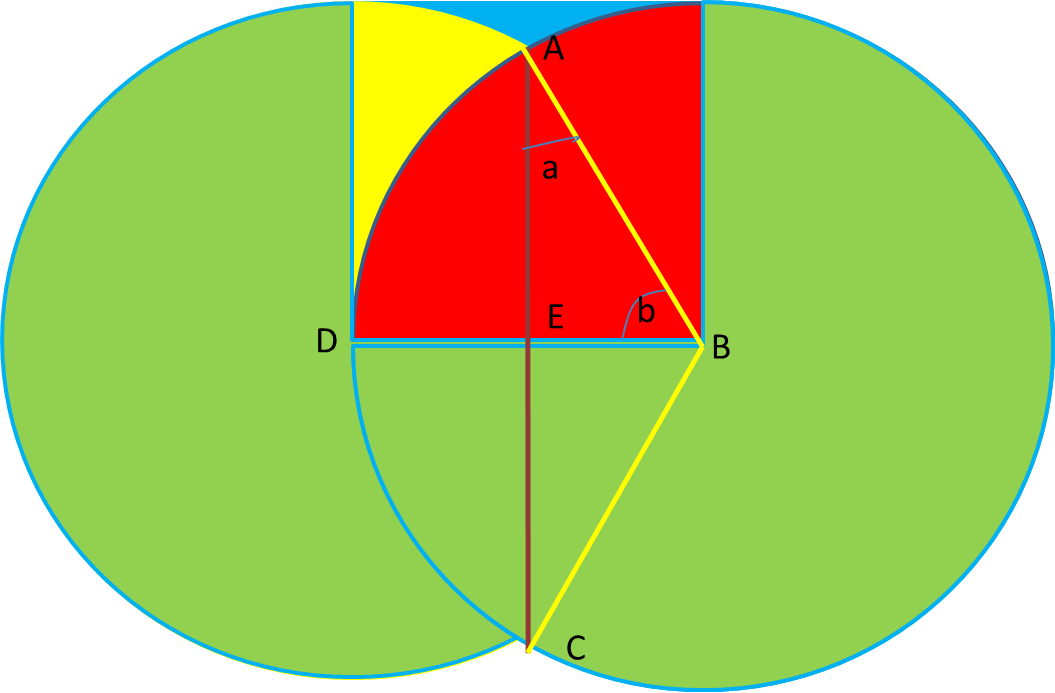
Step – 1
In this figure,
AB = BC = Radius of the Circle = 10 units
BE = DE = Radius of the Circle/2 = 5 units
Using Pithagoras’s Identity we get,
AE = CE = 5√3 units = AC/2
Area of ∆ABC = 1/2 × AC × BE = 25√3
sinb = AE/AB = 5√3/10 = √3/2 = sinπ/3
b = π/3 radian
Area of ABCD cord = 1/2 × AB^2 × ∠2b= 100π/3
Area of ACD = 100π/3 – 25√3
Area of ADE = 100π/6 – (25√3)/2
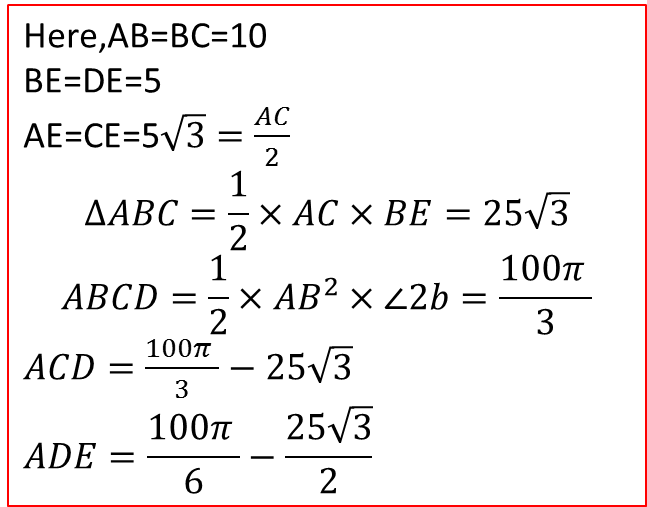
Now, we will change the image a little. We will solve the second step using this image.
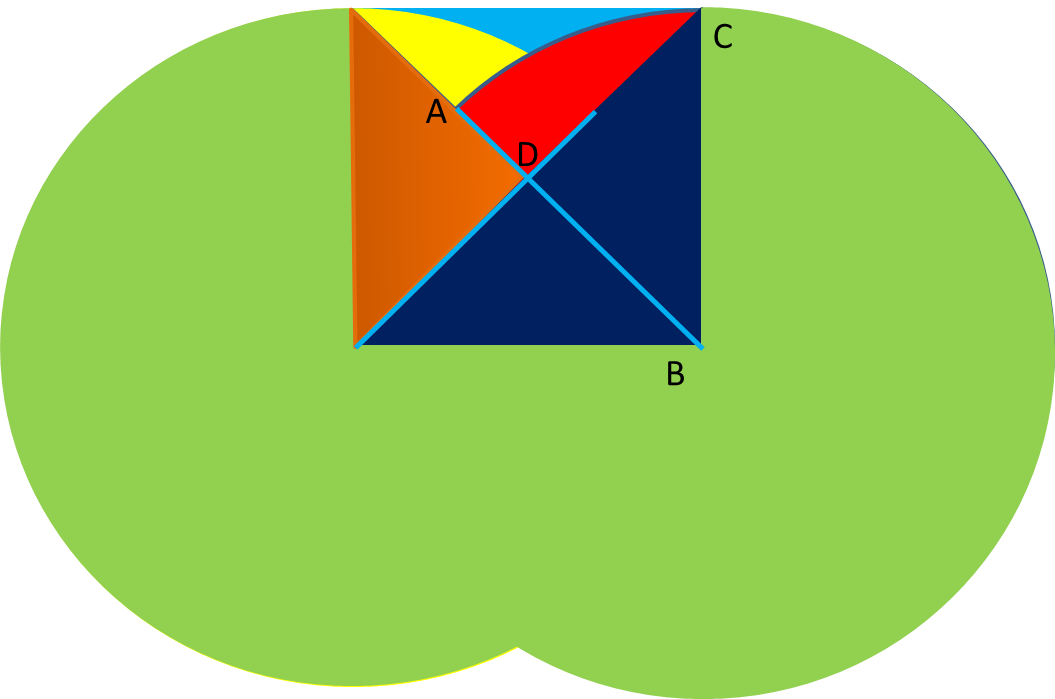
Step – 2
On square in the figure,
Area of CBD = One fourth of the square = 25
Area of ABC = One Octave of the circle = 100π/8 = 12.5π
Area of ACD = 12.5π – 25
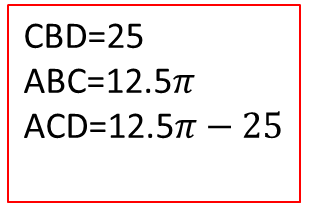
Now, we will complete the image. And with this image we will solve the important part of the problem.
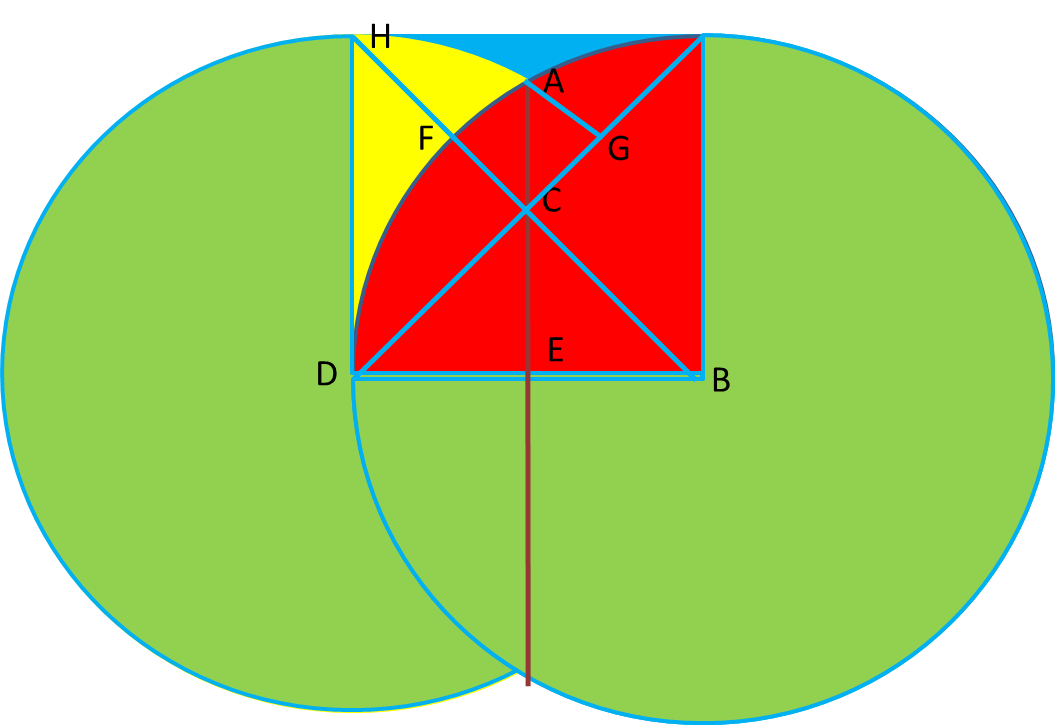
Step – 3
Area of CDE = One Octave of the Square = 12.5
Area of CDF = Area of ACD (from previous step) = 12.5π – 25
Area of ADE = 100π/6 – (25√3)/2 [From Step – 1]
Area of AFC = Area of ADE – Area of CDE – Area of CDF
Area of AFC = 100π/6 – (25√3)/2 – 12.5 – 12.5π + 25
Area of AGCF = Area of AFC + Area of AGC = 2.AFC = 2.AGC
Area of AGCF = 100π/3 – 25√3 – 25 – 25π + 50
Area of AGCF = 100π/3 – 25√3 + 25 – 25π
Area of AFH = Area of CGH – Area of AGCF = Area of CDF – Area of AGCF
Area of AFH = 12.5π – 25 – 100π/3 + 25√3 – 25 + 25π
Area of AFH = 37.5π – 50 – 100π/3 + 25√3
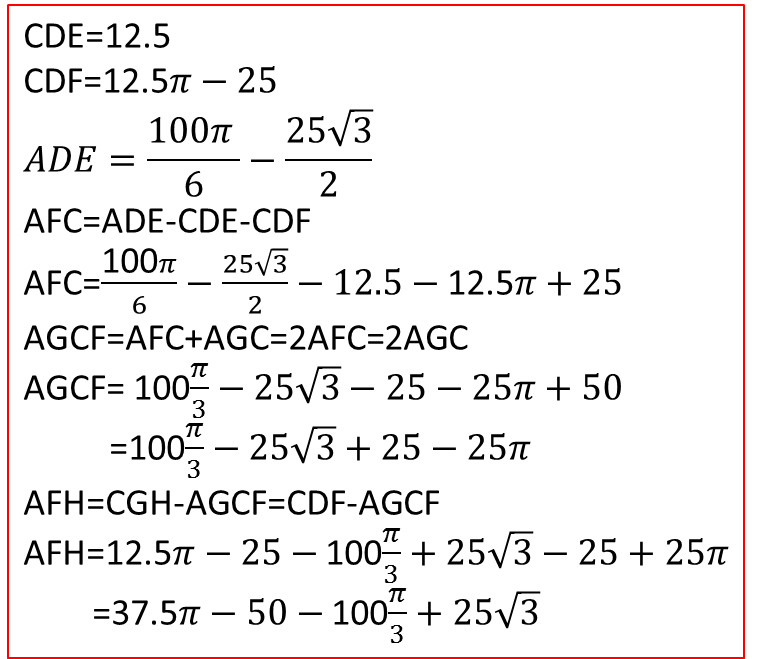
Now, we will see another image which is almost like the previous one. We just included a point M for our calculation. We will go through the final step of the solution with this image.
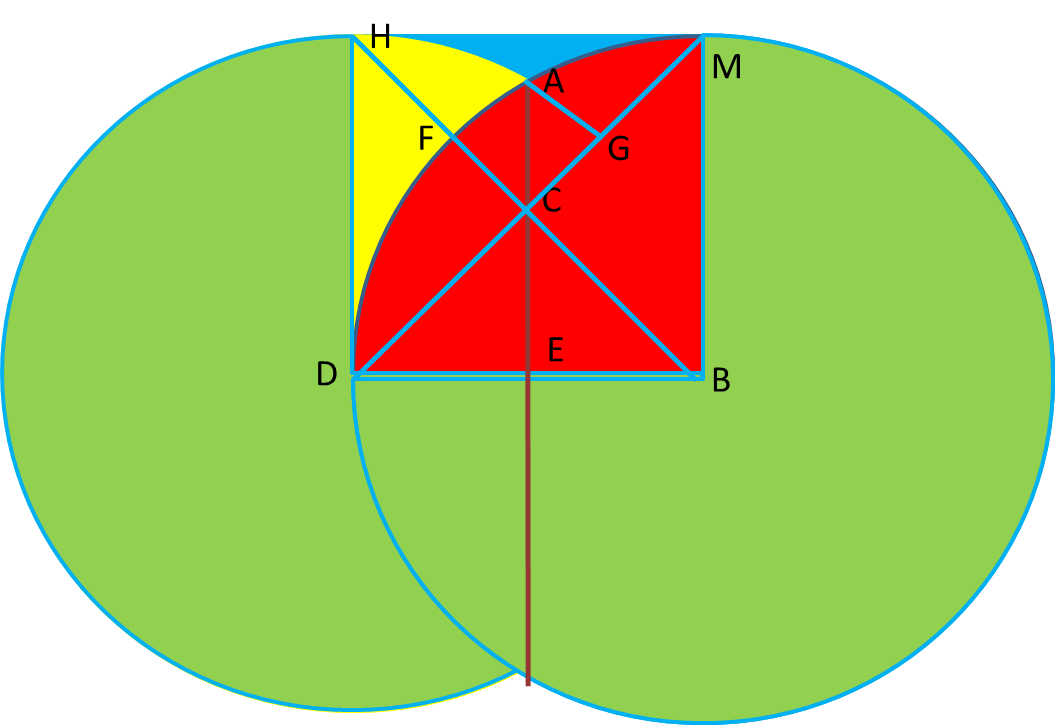
Step – 4
We need to find the area of AHM.
Area of AHM = Area of BHM – Area of MFB – Area of AFH
Area of BHM = Half of the Square = 50
Area of MFB =One Octave of the Circle = 12.5 π
Area of AFH = 37.5π – 50 – 100π/3 + 25√3 (From last Step)
Area of AHM = 50 – 12.5 π – 37.5π + 50 + 100π/3 – 25√3
Area of AHM = 100 – 50 π + 100π/3 – 25√3
Area of AHM = 4.339 Square Units
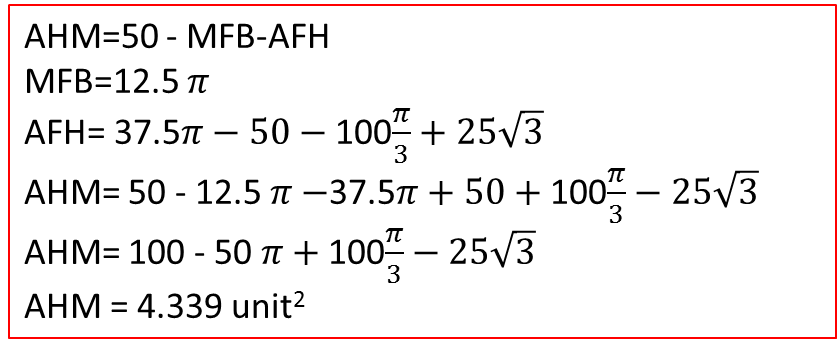
From our above solution we can find the formula for AHM as below:
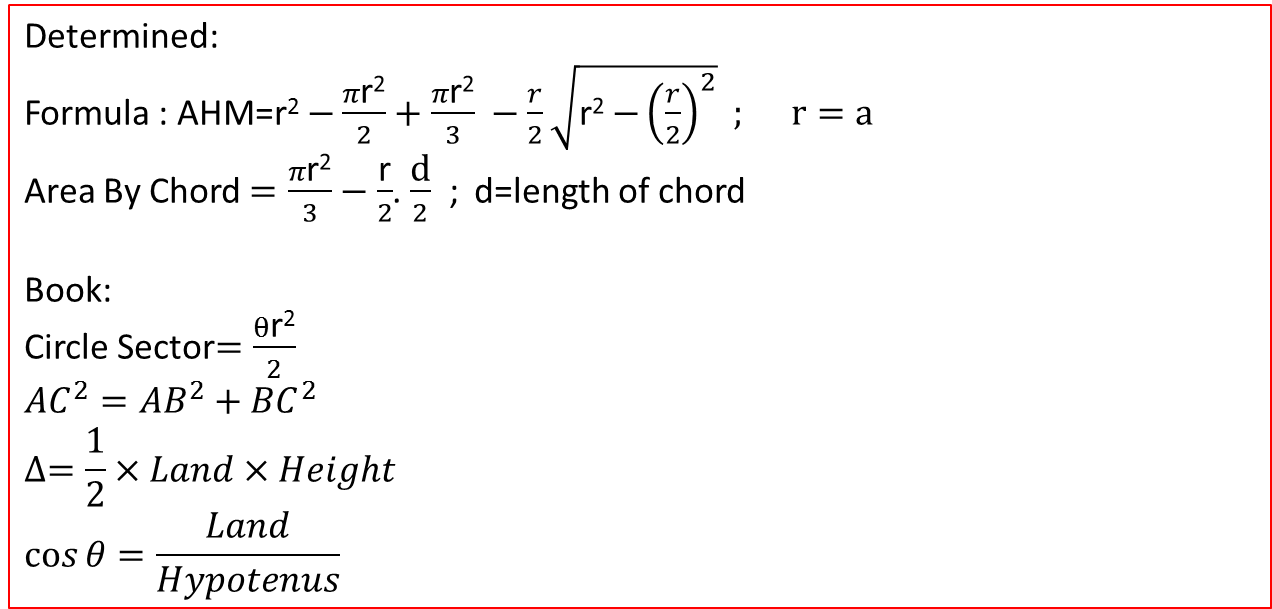
If you have any confusion please comment. Subscribe for more problem solutions like this.
